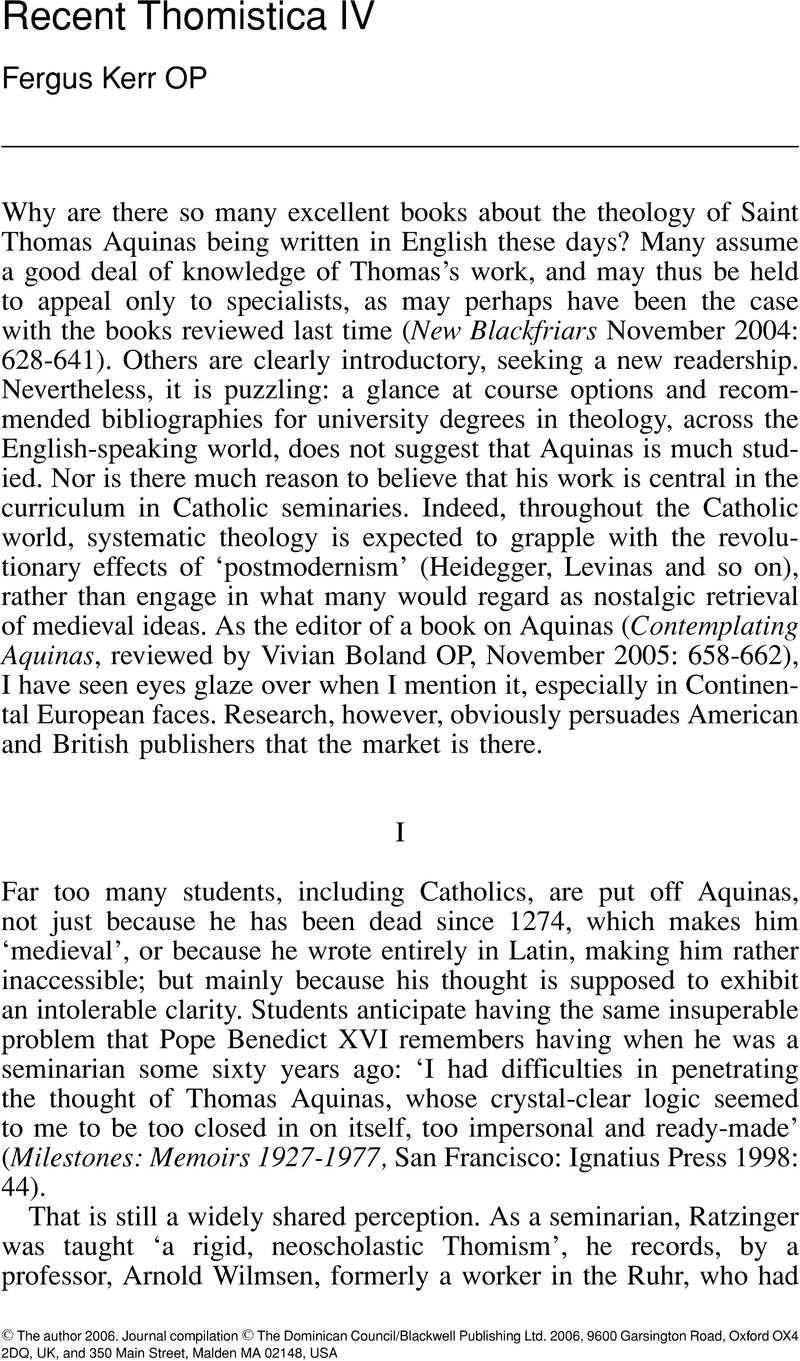No CrossRef data available.
Published online by Cambridge University Press: 01 January 2024

1 By the way, despite what is often said, Heidegger was never much of a Jesuit: he was sent away at the end of two weeks, in October 1909, aged twenty, because he got out of breath when they took him hiking — see Rüdiger Safranski, Martin Heidegger: Between Good and Evil (1998): 15.
2 For a learned and entertaining account see Hankey, Wayne J., ‘From Metaphysics to History, from Exodus to Neoplatonism, from Scholasticism to Pluralism: the Fate of Gilsonian Thomism in English-speaking North America’, Dionysius N.S. XVI (December 1998): 157-188Google Scholar.